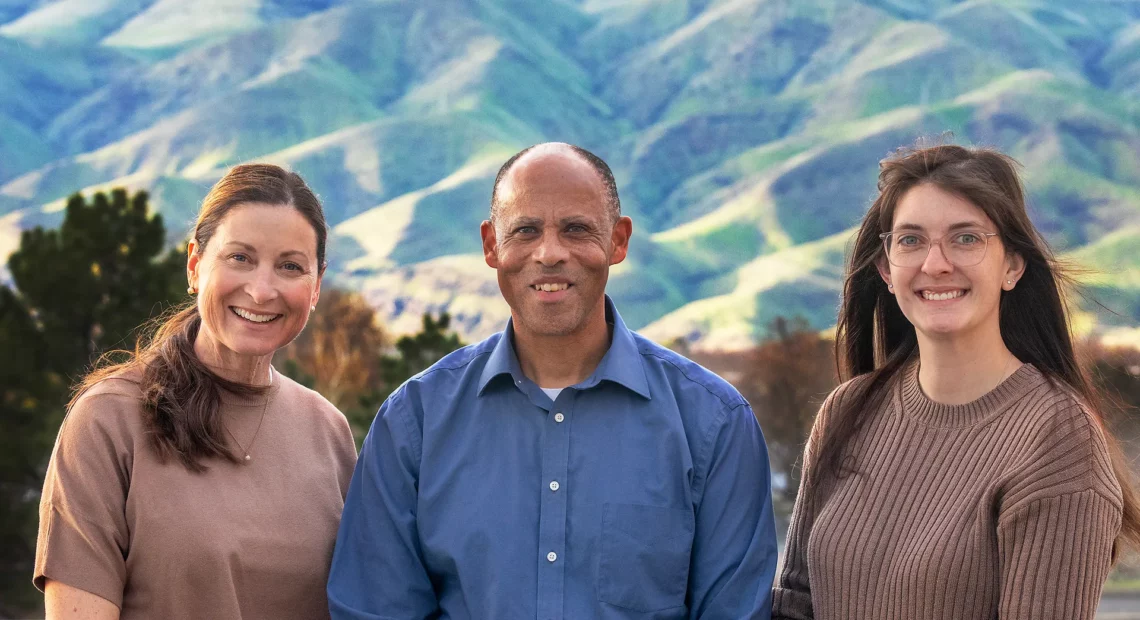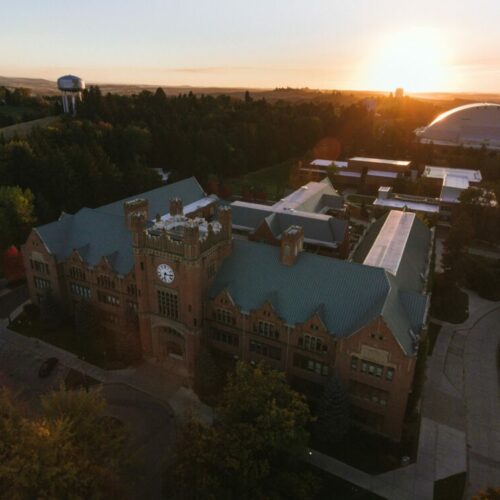
In one Idaho town, nurse-midwives stepping up as hospital struggles to recruit obstetricians
Listen
(Runtime 3:55)
Read
Around 600 babies are delivered at St. Joseph Regional Medical Center every year. Last year, Dr. Alex Watson — the only full-time obstetrician-gynecologist in the Lewiston-Clarkston Valley — delivered around 270 of those babies.
“Most OBs would do probably 150 to 200 deliveries a year. Over 200 is quite a bit,” Watson said. “I just do what needs done.”
Watson’s status as the only full-time OB-GYN in the valley came after several other doctors retired, the most recent of which came at the end of last year, he said.
Despite the added workload, St. Joe’s has continually been recognized as a high performer in several maternity metrics.
In December, U.S. News & World Report recognized the hospital for excellence in areas including minimizing avoidable cesarean sections. C-sections accounted for 17% of births at St. Joe’s, compared to 32% nationally.
The hospital was also recognized for its high breastfeeding rates, and high success rate for women delivering vaginally after a previous C-section.
A big part of that continued success may be thanks to the work of certified nurse-midwives Andrea Hedrick and Nicole Jones, who care for many of the pregnant patients at St. Joe’s.
Hedrick said midwifery is more accepted today than when she started in health care more than 30 years ago.
Midwifery seems to be growing as a profession, Hedrick said. It’s difficult to find hard data on the field, but the Bureau of Labor Statistics projects higher than average growth in the industry.
Part of that may be because midwives and nurse-midwives occupy a special place in the labor and delivery process, Hedrick said. Midwifery care emphasizes building relationships with patients, personalized care and providing assistance before, during and after birth.
“Physicians that are coming out now are much more open to patients being involved in their care and giving choices and informed consent. So, I think it is changing,” Hedrick said. “But we were ready to do it a long time ago, you know?”
Hedrick said she decided to go back to school to be a certified nurse-midwife years ago because of her experience working as a labor and delivery nurse, and has been working in the Valley as a nurse-midwife the past 14 years.
“I would watch things that were done to women that I didn’t agree with,” she said. “Rough handling of women sometimes, maybe seeing women not get informed consent.”
Jones, who was hired a few months ago, decided to pursue the profession after her positive experience as Hedrick’s patient.
“That’s what set me on my path,” Jones said. “(Before that) I was studying to go to med school.”
Another part of the growth in midwifery may be that recruiting OB-GYNs is harder than ever for many hospitals, particularly in rural communities.
A study published by The Journal of the American Medical Association showed a continual decline in access to OB-GYN care. The number of rural hospitals offering obstetrics care decreased by 9.3% from 2010 to 2022, compared to a 6.2% decrease among those in urban settings.
At hospitals like St. Joe’s, Hedrick and Jones handle more of the lower-risk pregnancies, allowing Watson to focus more on patients with complications such as blood clotting disorders, cardiac issues and more.
While nurse-midwives can handle many different types of care, some emergency and high-risk cases are reserved for OB-GYNs.
But even with that triaged care, Hedrick said, she’s still felt the squeeze from having such a small staff.
In an average week, Hedrick sees around 90 patients, working three and a half days in the clinic. She’s on call 24/7 for her patients, and last year delivered 226 babies.
“During the summer, I was seeing upwards of like, 35 a day,” she said “It’s really difficult to do that when you’re seeing that many patients … They didn’t tell me I had to, but you know, they’re pregnant. They need to see someone.”
Recently, Hedrick said she and Jones began training to use a birth vacuum extractor to assist in certain emergency situations where a baby needs to be delivered quickly.
That type of care is within her scope of practice, Hedrick said, but it wasn’t something she needed to learn in the past.
“We just weren’t in a situation five years ago that I even needed to think about that. ’Cause I could always call someone and there was always another OB in town that could come over and help out if need be,” she said.
Watson isn’t the sole OB-GYN in the valley for a lack of recruitment efforts, he said. There has been continual work to bring more providers to the area on and off for the past five years.
But recruiting doctors in a rural community can be a challenge for several reasons, Watson said. One is that doctors in small towns are on-call more often. Another is that physicians in big cities can specialize more than those in small towns.
“They find kind of a niche in the area of OB-GYN that they like and most of their practice kind of settles on that. Whereas in communities such as this, we take care of everything,” Watson said.
Another factor that may play a role is state politics, Hedrick said.
Idaho lost 22% of its practicing obstetricians following the implementation of its abortion ban, according to data compiled by the Idaho Coalition for Safe Healthcare. Roughly 40 to 60 obstetricians quit practicing, left the state or retired, while only two moved to the state during the same 15-month study period.
“I’m not saying that’s the only reason,” Hedrick said, “but there’s some things in the political arena that are kind of making that decision for us.”
Some doctors in the state have said they worry they’ll face legal prosecution for providing care they feel is medically necessary in emergency situations.
Watson said he doesn’t feel the state laws have affected his work or how he manages patients. But he does think it may affect the ability to recruit other doctors.
“State laws — I’m not really here to tell you whether they’re right or they’re wrong and how I feel about them,” he said. “What the general impact has (been) is that it’s made a lot of other physicians somewhat wary, and very cautious about coming to states such as ours.”
Rori Santana , director of St. Joe’s Family Beginnings unit, said the hospital has been working to recruit more employees. She is expecting to add two to three employee providers within the next few months, she said.
Santana said she’s grateful for the work ethic of the current staff and obstetrics providers at the hospital.
Once new providers arrive, she said, it will allow more time off for current providers, and allow patients to see providers sooner.
“I think it has been (the OB providers’) commitment to the community that has made this work,” she said. “We’re beefing up our staff and we are going to remodel our unit. And there’s a lot of trying to be — not reactive after the situation happens — but plan and prepare.”
















